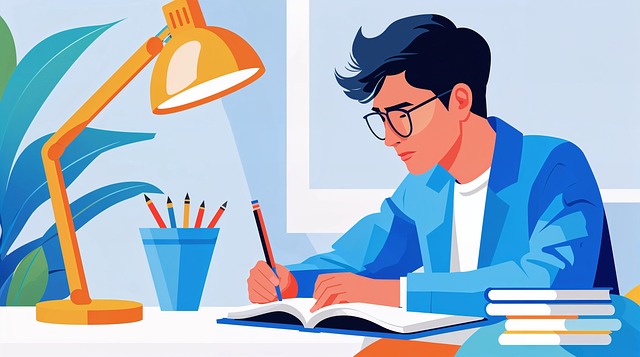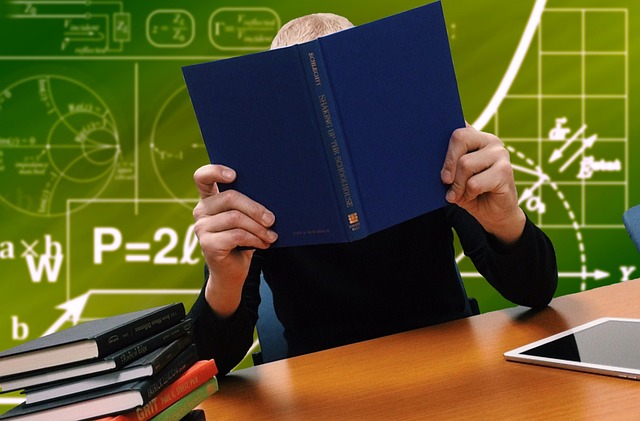Imagine sitting down to study, and instead of dread, you feel a spark of excitement. That spark comes from dopamine, a tiny molecule in your brain. With the formula C8H11NO2, it drives feelings of joy during fun times like munching snacks or binge-watching shows.
Dopamine acts as your brain’s reward signal. It floods in when you do things that feel good, like chatting with pals or scrolling feeds. But when you crack open a textbook, that rush often dries up, leaving you bored or frustrated.
The fix? Train your mind to link studying with dopamine hits. We’ll break it down step by step, using simple tricks to turn learning into something you actually look forward to.
Section 1: Understanding Your Dopamine Baseline
Your brain sets a normal level of dopamine from daily habits. This baseline shapes how you feel about tasks. If it’s too high, low-reward jobs like homework hit harder.
Ask yourself: What’s my everyday dopamine level? Do phone games and junk food keep it sky-high? Or does a calm routine hold it steady?
Defining the Baseline Framework
Think of your baseline as the average buzz from routine activities. Scroll TikTok all day with candy in hand? Your level sits high, making “normal” feel thrilling. Switch to studying, and it crashes like a bad drop on a rollercoaster.
This gap explains the pain. High baselines come from constant quick wins, like likes or bites. They spoil you for slower rewards.
I made this idea to check my own habits. It’s not a lab test, but it helps spot patterns.
The Impact of Lifestyle Choices
A junk-food, screen-heavy life pushes your baseline up. Studying then feels like torture by contrast. You crave the fast fun.
Flip it with better choices. Walk often, eat clean, cut phone time. Your baseline drops to a sweet spot. Homework loses its edge; it just feels doable.
One study shows exercise boosts steady dopamine without spikes. Processed foods do the opposite. Pick the steady path, and learning gets easier.
Section 2: Lowering Your Baseline Through Dopamine Detox
Cut back on easy thrills to reset your brain. Call it a dopamine detox if you want. It builds space for real focus.
Start small with daily breaks from screens. These steps lower that baseline, so studying doesn’t sting as much.
Embracing Intentional Disconnection (The Daily Walk)
Take a 10- to 15-minute walk each day. Leave the phone behind. No tunes, no checks—just you and the world.
Phones stick to us like glue. They’re always close, feeding endless dopamine. Ditch it, and at first, you’ll itch for it.
Push through. Notice birds chirping, leaves rustling, fresh air. It frees your mind. Over time, thoughts settle, and calm grows.
Implementing Screen Boundaries
Set a no-screen rule for mornings and nights. Skip the phone for the first 30 minutes after waking. Do the same before bed.
You run the show, not your device. Grabbing it right away hands over control. Mornings without it let you stretch, sip water, ease into the day.
I tried it. Days I peek too soon? I drag through hours feeling blah. Boundaries build better starts and ends.
Cultivating Stillness with Mindfulness
Meditate 10 minutes daily. It evens out wild dopamine swings. Plus, it cuts stress via lower cortisol and sharpens your attention.
Here’s a quick five-step routine:
- Pick a quiet spot free from interruptions.
- Sit comfy—chair or floor—with a straight, relaxed back.
- Set a 10-minute timer.
- Shut your eyes. Feel your breath move in and out.
- Stay in the moment. Note stray thoughts, then refocus on breathing.
Do this often. It trains your brain for peace amid chaos. Focus improves, and studying waits less painfully.
Section 3: Elevating Study Pleasure: Moving Studying Up the Scale
Now shift gears. Don’t drop the baseline more—instead, boost studying’s appeal. Use five factors: where, what, how, when, who, and why.
Add fresh twists and quick wins. This moves homework higher on your pleasure list.
Manipulating the Environment (Where)
Change your spot to spark interest. Dark rooms kill vibe; new places wake it up.
In college, I hit libraries under grand domes. The views inspired me—high ceilings, soft lights. At home, try a cafe or park bench.
No travel? YouTube has ambiance videos. Search “study in Hogwarts” or “rainy forest cabin.” They run hours, pulling you into cozy worlds without leaving your desk.
Pick spots that feel new but quiet. Too much buzz distracts. Novelty without noise works best.
Introducing Novelty in Tools (What)
Fresh supplies make tasks pop. A new notebook or pen feels like a treat. It tricks your brain into small joys.
Back in AP Calc, my color-screen graphing calculator changed everything. Homework felt fun for weeks, just from that gadget.
Don’t splurge big. Swap pencil for pen, or try a new note style. The point? Tiny changes bring dopamine without breaking the bank.
Section 4: Hacking the Reward System During Study Sessions
Big tasks drag because rewards come late. You grind hours for one “done” check. Flip it—build wins along the way.
Break it down for constant hits. This “how” turns work into play.
Creating Hyper-Granular To-Do Lists
Make a detailed list on a sticky note. Keep it by your side. Check off bits as you go.
Write specifics: “Read 5 pages.” Then “Read 10.” Or “Write one paragraph,” then two. Each tick gives a rush.
It gamifies studying. Like levels in a video game, progress feels good right away. No more waiting for the end.
Linking Tasks to Immediate Micro-Rewards
Pair checks with treats. After 10 pages? Five-minute break. Or grab a quick snack.
This doubles the fun. You get the check-off buzz plus a real perk. Studying becomes a rewarding loop.
Try it on tough subjects. Momentum builds, and sessions fly by.
Section 5: Optimizing Timing and Social Context
Timing and company matter too. “When” sets your energy; “who” adds ease.
Tweak these for smoother rides.
Strategic Timing (When)
Hit hard stuff early. Mornings or right after school work best. I did homework in study hall back then—freed up evenings.
Squeeze in bits between classes. Answer one question if you have minutes. Home feels light, just continuing the flow.
One note: Light review before bed aids memory. Studies back this for retention. But save heavy lifts for daylight.
Leveraging Social Connection (Who)
Study with a buddy for laughs and help. They quiz you, explain bits, cut the solo stress.
Late nights with friends made college memorable. We joked through problems, turning grind into good times.
Caveat: Pick low-stakes tasks. Big exams? Go solo if focus slips. Discipline keeps it productive.
Section 6: Shifting Your Study Mindset (The Why)
Purpose powers enjoyment. Grades alone? That’s weak fuel. Dig deeper for real drive.
Reframe it. See learning as growth, not chore.
From Obligation to Privilege
Ditch “I have to study this.” Say “I get to.” It flips dread to chance.
Education beats distractions everywhere. Being informed helps you stand out. Hamlet or Krebs cycle? They build your mind.
This view adds meaning. Sessions feel worthwhile, not just duties.
Focusing on Skill Development Over Facts
School teaches more than trivia. You learn to connect ideas, think sharp, solve puzzles.
These skills fit any job—doctor, builder, or none. They prep you for life’s curveballs.
Even boring topics sharpen you. Embrace the process; rewards follow.
Conclusion: Building an Enjoyable Learning Structure
Master dopamine by lowering your baseline and lifting studying’s fun. Use walks, screen rules, and mindset shifts. Add novel spots, tools, and rewards.
Key takeaways:
- Take daily phone-free walks to reset.
- Set 30-minute screen boundaries at day’s start and end.
- Meditate 10 minutes with the breath focus routine.
- Change study environments or use ambiance videos.
- Build granular to-do lists with micro-rewards.
- Study tough tasks early; review lightly at night.
- Pair with focused friends for non-exam work.
- Switch to “I get to learn” for deeper purpose.
Stick with these, and studying turns enjoyable. Your brain will thank you. Start one tip today—what’s your first move?



